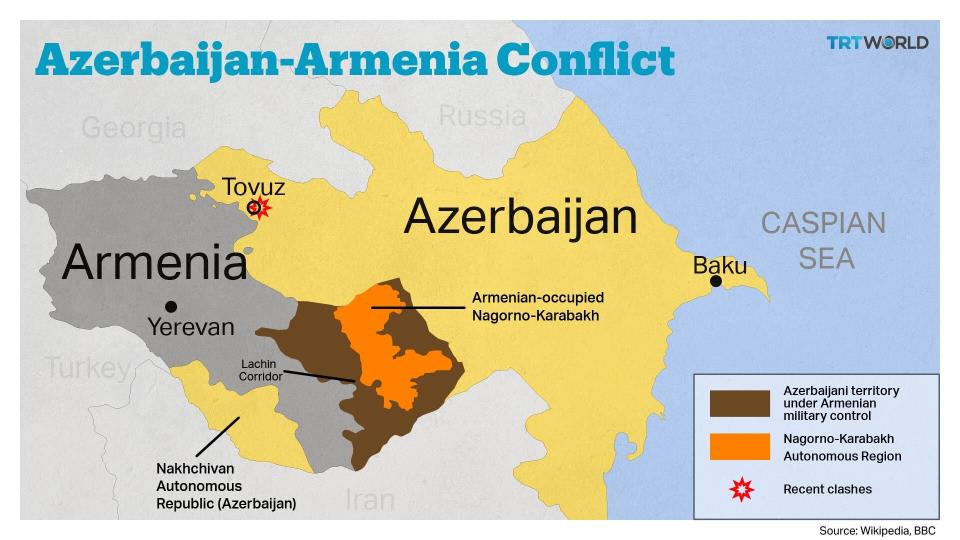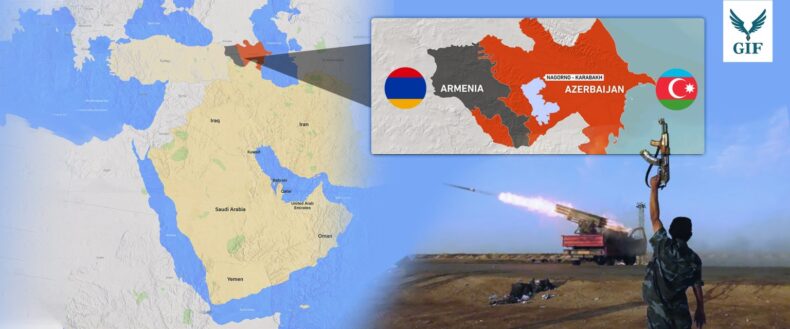In their heaviest fighting since a conflict in 2020 over the disputed Nagorno–Karabakh territory, Armenia and Azerbaijan claimed almost 100 army deaths on Tuesday. A tenuous cease-fire mediated by Russia halted the most recent round of fighting over the volatile enclave in Azerbaijan that is home to many Armenians. World powers have urged a ceasefire as both sides accuse one another of starting the deadliest flare-up since the 2020 conflict.

WHAT IS THE DISPUTE IN THE REGION?
The hilly, landlocked territory of Nogorno-Karabakh is located within the borders of Azerbaijan and has been a source of contention for more than a century.
Although the region is recognized by the international community as being part of Azerbaijan, the majority of its residents are Armenian, who have resisted Azerbaijani rule.

The territory of around 150,000 people declared independence in 1991, and it has controlled itself as the unrecognised Republic of Artsakh ever since, with Armenian assistance.
Despite hints of progress toward peace in recent years, “the frozen conflict” exploded again in 2020.
Azerbaijan recaptured large parts of Nagorno-Karabakh in a six-week battle that killed approximately 6600 people and ended with a peace deal negotiated by Russia.
To keep the calm, Moscow sent roughly 2,000 troops to the area.
Some on both the Muslim-majority Azerbaijan and the Christian-majority Armenian sides want to frame the conflict in religious terms, despite the fact that experts argue this is an oversimplification.
Why are they Fighting now?
In 2018, a revolution in Armenia brought in a new generation of politicians and sparked optimism that the Nagorno-Karabakh conflict may be resolved.
As Armenian Prime Minister, Nikol Pashiyan has taken a hard and, in the perspective of Azerbaijani officials, aggressive stance on the problem, these hopes have faded.
Since 1993, a single family has controlled Azerbaijan. Now, they claim they are fighting back against Armenian aggression in regions that are technically part of Azerbaijan but have been occupied by Armenian military and separatists for decades.

Shortly after midnight, Azerbaijan accused Armenia of “large scale subversive acts” near the border districts of Dashkesan, Kelbajar, and Lachin, and said that its army positions, “came under fire, including from trench mortars.” Armenia claimed that Azerbaijani forces “launched intensive shelling, with Artillery and large-calibre firearms,” against Armenian military positions in the direction of the cities of Goris, Sotk, and Jermuk.
Reactions of World Leaders
- Turkey, an Azerbaijani ally, has warned Yerevan to “stop its efforts against Baku.”
- US Secretary of State Antony Blinken expressed serious worry about the allegations of assaults and demanded “an end to any military hostilities” adding that there can be no military solution to conflict.
- Russia expressed “grave worry” about the increase in conflict.
- The President of the European Council, Charles Michel, stated that the EU was prepared to undertake measures to prevent further escalation, adding that there was “no alternative to peace and stability in the region.”
Just what stakes does this war have, exactly
Aside from the humanitarian issue of civilian deaths on both sides, the conflict raises international concerns for a number of reasons.
The greater South Caucasus is an important conduit for gas and oil from Azerbaijan to Turkey, as well as to Europe and other global markets.
Regional powers such as Russia, Turkey, and Iran have varied degrees of involvement in the South Caucasus.
Turkey has previously stated its unwavering support for Turkic-speaking Azerbaijan, while Russia maintains a security relationship with Armenia while selling weaponry to both nations.
Moscow and Ankara have been competing for influence in several parts of the world, including Syria and Libya.
Furthermore, Moscow’s involvement in the Nagorno-Karabakh conflict, while also battling in Ukraine, adds to the issue’ ambiguity.













